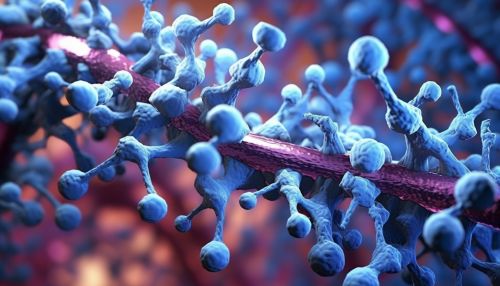Telomerase
Introduction
Telomerase is a ribonucleoprotein that adds a species-dependent telomere repeat sequence to the 3' end of telomeres. Telomeres, located at the ends of chromosomes, serve to protect the ends of the chromosome from degradation and fusion with neighboring chromosomes. Telomerase is a reverse transcriptase enzyme that carries its own RNA molecule, which is used as a template when it elongates telomeres.


Structure and Function
Telomerase is composed of several subunits, including a catalytic protein component known as telomerase reverse transcriptase (TERT) and an RNA component, telomerase RNA (TR or TERC), which serves as a template for the telomere repeat sequence. Other associated proteins, such as dyskerin, NOP10, NHP2, and GAR1, are also essential for the stability and function of the telomerase complex.
Role in Cellular Aging and Cancer
Telomerase plays a critical role in cellular aging and cancer. In normal somatic cells, telomerase activity is typically low or absent, leading to progressive telomere shortening with each cell division. This eventually leads to cellular senescence or apoptosis. In contrast, in most cancer cells, telomerase is reactivated, allowing these cells to maintain their telomere length and achieve cellular immortality.
Telomerase as a Therapeutic Target
Given its role in cellular aging and cancer, telomerase has been proposed as a potential therapeutic target. Inhibitors of telomerase activity could potentially be used to limit the growth of cancer cells, while activation of telomerase could potentially delay cellular aging and treat diseases associated with premature aging.
